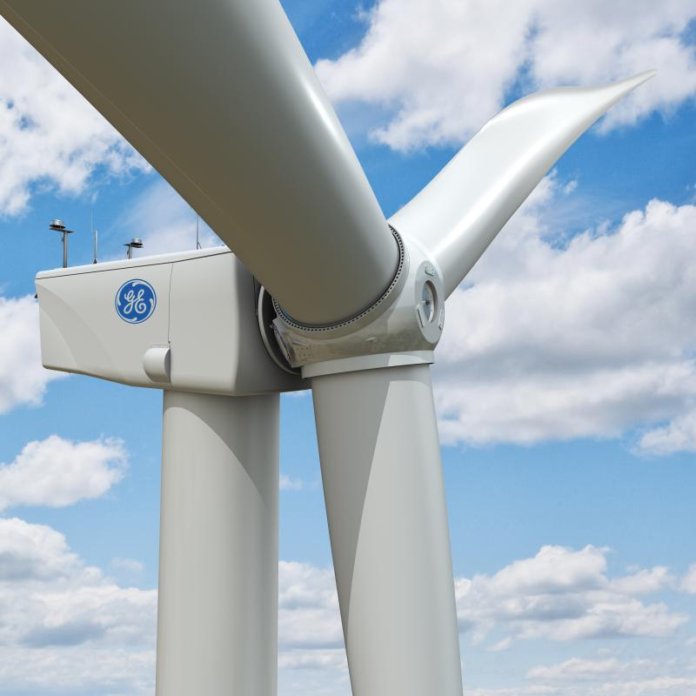GE Power’s grid solutions business has unveiled a new gas-insulated swtichgear (GIS) suited for wind power applications, along with several other grid technology solutions designed to help address customers’ needs to adapt to a more digitalized, decentralized and decarbonized energy landscape.
According to GE, by 2050, 66% of the world’s population will be living in urban communities, requiring more power in compact areas. Simultaneously, offshore wind is predicted to reach a cumulative capacity of 115 GW by 2030, and these wind farms are moving into deeper waters that require larger turbines with higher power ratings, explains GE. To address these shifts, the company has launched a new compact F35 GIS for 72.5 kV networks.
With a bay volume reduced by 23% and a 30% reduction in SF6 mass, this new GIS delivers reliable power to urban, industrial and wind farm applications, says GE. For wind turbines and collection platforms specifically, the design allows the power voltage transformer to feed auxiliaries under “no wind” conditions, making it an ideal interface for offshore wind applications, according to GE.
Next, the company’s new HVDC solution implements a digital measurement system fully based on IEC 61850. According to GE, eLumina delivers a 50% smaller footprint and 80% reduction in field connections to simplify system architectures and improve maintenance and operational efficiency. The platform is designed around a “single source of truth” system model, enabling a more scalable, flexible, interoperable and adaptive HVDC solution.
In addition, GE Power has created “digitally connected” solutions designed to increase efficiency and reliability of the network and its connected assets:
- “Digital Twin” for Power Transformers enables effective asset performance management to extend asset life and maximize operational performance. Advanced sensor technology with a digitalized secondary system delivers condition-based data and statistic models to build a software-enabled model of the transformer or even the entire substation: the twin. This interactive model allows operators to move from reactive to predictive maintenance solutions and improve system efficiency.
- Intelligent Digital Substations enable utility operators to maximize asset and substation utilization up to 30%. Coupling visualization tools with the digitization of primary substation equipment and secondary systems, operators can collect and analyze critical data to proactively detect potential failures up to six months in advance.
- Asset Lifecycle Management Services include a comprehensive portfolio of methods to collect distribution and transmission asset health data through a set of analytics and consulting services. These services are tailored to reduce failure rates by up to 50%, reduce maintenance costs by up to 25% and extend asset life by up to 20%. By incorporating the use of data, these end-to-end services are designed to optimize grid asset management strategies.
- Advanced EMS with full WAMS enhancement provides situational awareness for operators to increase network utilization and stability, allowing more renewable integration and network automation.
In the past, a simpler grid model transmitted electricity from large generation plants to end-users, explains GE. However, with carbon dioxide levels the highest they have ever been in 800,000 years, we need a modern grid to integrate renewable energy resources effectively, the company says.
“The global energy landscape is undergoing a massive transformation. The grid of the future will require smarter, faster and more interoperable solutions to ensure resiliency, efficiency and security,” says Reinaldo Garcia, president and CEO of GE Power’s grid solutions business. “That’s why our grid solutions team is focused on investing in and delivering new digital, automation and HVDC technologies to transform energy networks across the globe. Our new product innovations will help our customers not only navigate the ever-changing energy landscape, but also unleash the full potential of electric grids worldwide.”




